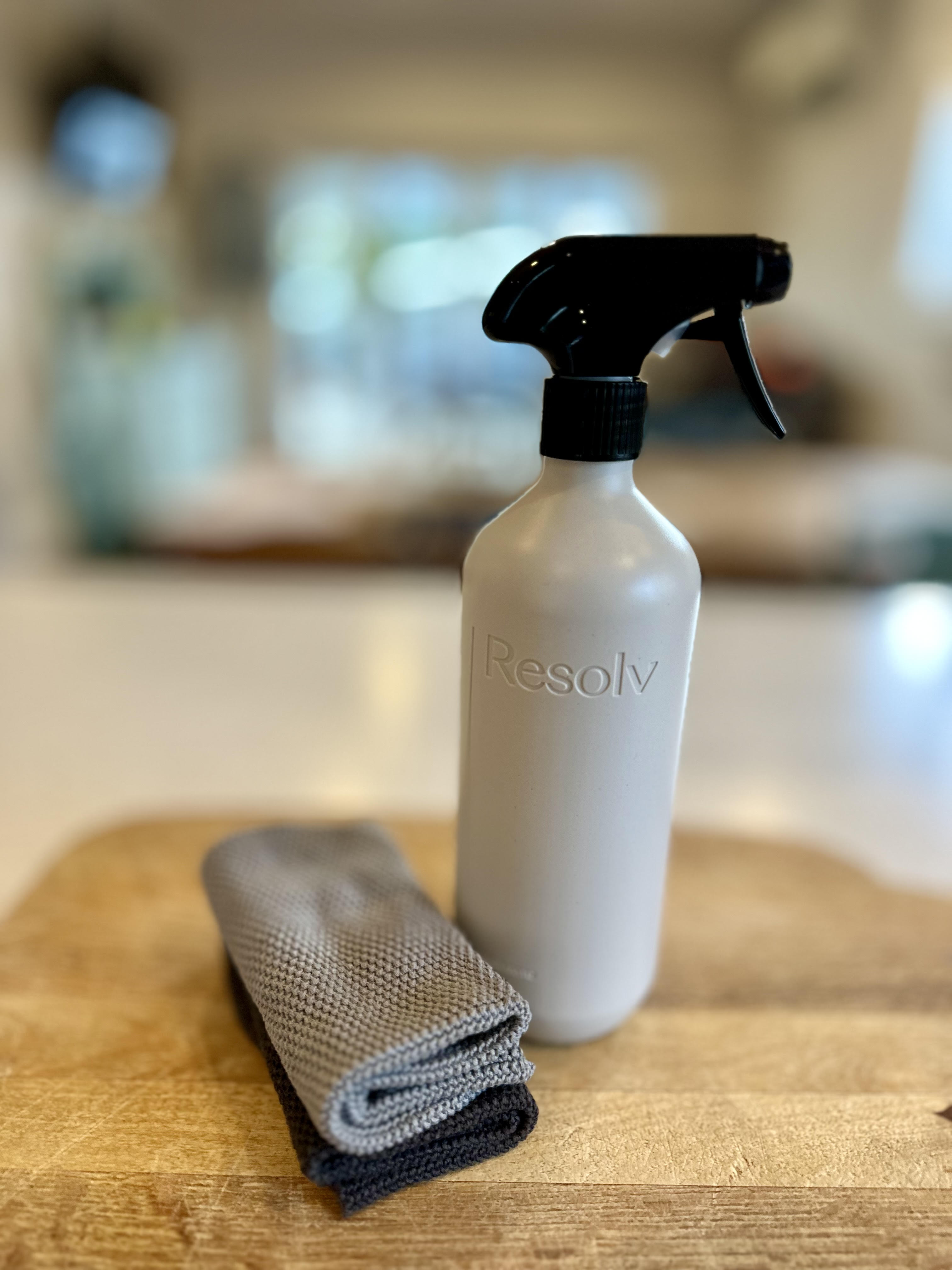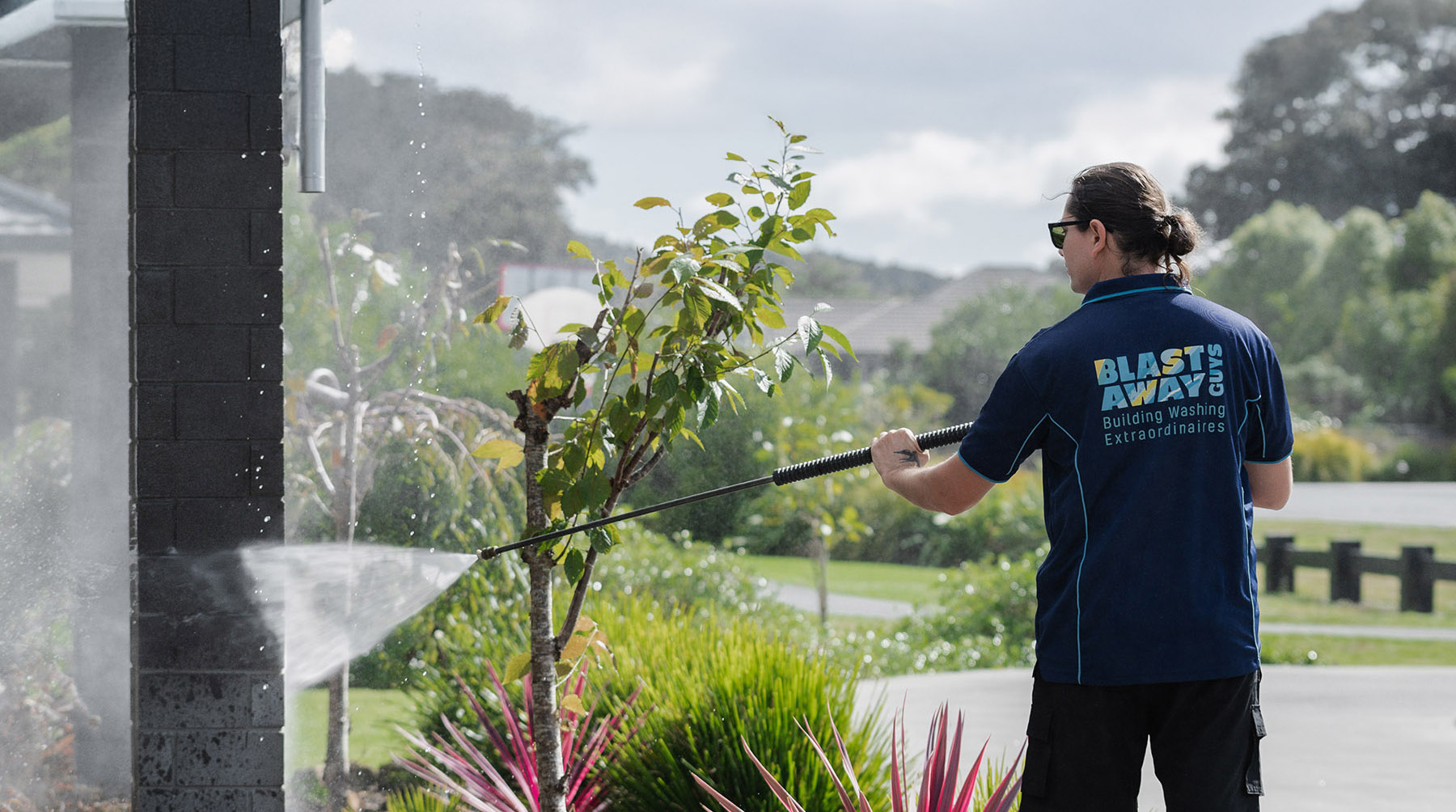Why a winter clean is just as important as a spring one

Your winter cleaning checklist: outside and inside.
When you hear "deep clean," most people think of spring. But here’s the thing: in New Zealand, a winter clean is just as important, if not more.
Winter means more time spent indoors, closed windows, and heaters running. That creates the perfect storm for mould, grime, and bacteria to thrive. And if you're in a place like Northland or Auckland, winter days often bring bursts of sunshine and humidity between rain showers. That combination is exactly what mould loves.
So while spring cleaning might get all the glory, a winter clean protects your health, your home, and your wallet.
The science behind a proper clean (and why timing matters)
Most cleaning sprays don’t work instantly, even though the bottle might promise it.
Here’s how it actually works:
- Surfactants: These clever molecules surround grease and grime, lifting it off your surfaces into tiny droplets that can be easily wiped away.
- Disinfectants: These need time. About 10 minutes is ideal to break down the proteins and cell membranes that keep bacteria and viruses alive.
- After that, everything is in a form that’s safe to wipe away.
Pro tip: Whether it’s a kitchen bench, bathroom tap, or your exterior door handle. Leave your cleaner to work its magic before you wipe.
Are you breathing in nasties? Meet the DIY cleaner that changed the way we clean.
Many household cleaners release volatile organic compounds (VOCs). These are invisible gases that can irritate your eyes, nose, and throat. Some even trigger headaches. We recommend switching to low-tox, plant-based cleaners where possible especally when cleaning inside.
We use a DIY multi-purpose MiracleCleaner, (that actually works) which we trialed last year and loved. It’s gentle but effective, and doesn’t leave you gasping for fresh air after you’ve cleaned the shower. And it smells of eucalyptus.
You can use it on pretty much all surfaces:
• It shines stainless steel.
• Cleans the oven top and oil splashes from your backsplash.
• You can use it on everything from the walls to the floors, including the bathroom shower and toilet.
• It's even great for removing stubborn stains from clothing before washing.
Here are a couple of MiracleCleaner tips
- Make sure you label it if you reuse and already labeled spray bottle.
- The essential oil is important. It is the heavy-duty degreaser in the spray, and it doesn't work anywhere near as well without it.
- You could try adding a citrus essential oil like orange. We did not try this, so we would love to know how you got on if you do.
- If using it on glass, do not add too much.
- If you use dish soap that is coloured your spray will also be coloured.
Recipe
The following recipe was featured on A Current Affair and was originally posted on cheapskates.com.au.
Ingredients
- 1.5 litre water (1 cup boiled)
- 300ml vinegar
- 60ml dishwashing liquid
- 25ml eucalyptus oil
- 3 dessertspoons Washing Soda (Google washing soda NZ. You can buy it from New World and Woolworths.)
Method
- Mix Washing Soda with about 1 cup boiling water to dissolve.
- Add remaining ingredients.
- Pour into a 2 litre bottle.
Inside your home: winter cleaning checklist
Here’s how to reset your home for winter in a way that’s simple, fast, and actually works.
Your indoor action plan:
- Work top to bottom – Always start with ceiling corners, lights, and vents before moving down to surfaces and floors. Gravity’s a thing.
- Walls, switches, and handles – Use a spray mop with Velcro pads for walls. It’s fast and weirdly satisfying. Don’t forget those light switches and remotes.
- Curtains and soft furnishings – Dust mites love damp curtains. Give them a wash or vacuum.
- Bedding and mattresses – Hot wash the sheets and air out the mattress in the sunshine.
- Fly spots on walls and ceilings? Use our fly spot cleaning hacks here for a fast fix.
- Kitchen and bathroom corners – Fans, grout, extractor hoods. They’re easy to forget but make a big difference.
- Fridge and pantry – Bin the old jars of "who-knows-what" and wipe down shelves.
Stop mould before it starts: your towel habits matter
Damp towels are one of the sneakiest culprits when it comes to spreading mould and bacteria indoors. In winter, when windows stay closed and heaters are running, the extra moisture in the air makes it harder for towels to dry quickly. Left crumpled or thickly folded, they create the perfect breeding ground for musty smells, germs, and mould spores. The fix is simple and it makes a real difference.
Here is how to hang a damp towel in winter to keep your home healthier and your towels fresher for longer:
1. Spread it out fully
Avoid folding it over itself. Use a wide towel rail or clothes drying rack so air can circulate on both sides.
2. Use a heated towel rail if available
These are ideal in winter because they dry towels faster and reduce moisture build up.
3. Position it near a heat source
If you do not have a heated rail, hang it near a heat pump, dehumidifier, or heater. Make sure it is safe to do so. Warm air helps the towel dry faster.
4. Ventilate the room
Open a window or run an extractor fan for ten to fifteen minutes. Even a small opening makes a big difference.
5. Do not leave it in a heap
Never leave a damp towel crumpled on the floor or in a basket. That creates perfect conditions for mould.
6. Wash regularly
Wash towels after three to four uses. If it smells musty, it may already contain mould spores. Add a cup of white vinegar to the wash to help remove them.
Outside your home: exterior cleaning tasks you don’t want to ignore
Winter grime isn’t just an inside problem. Exterior cleaning protects your home from damage and makes it safer to walk around outside when it’s wet.
Here’s what to tackle outdoors:
- Door handles and entryways – Germs don’t stop at the front door. Give these a wipe regularly.
- Decks, paths, and driveways – Slippery with algae or moss? We’ll happily take care of that for you.
- Cladding and paintwork – Grime can break down paint and lead to costly repairs. A soft wash can extend the life of your exterior by up to 25%. Learn more about our house washing services here. Or check out our house washing prices here.
- Gutters and downpipes – Blocked gutters can cause leaks or even roof damage. We can help with gutter clearing or check out our gutter clearing prices here.
- Outdoor lights – Give them a wipe so you’re not fumbling in the dark.
- Does your outdoor area light you up? Add some magic with lighting – Winter mornings and nights are dark, but solar lights are a simple way to brighten things up.
- Push-in solar spikes look great angled at trees or architectural features.
- Festoon lights can transform decks and fences into cosy evening spaces. We added these to our deck and we have them and we use them all the time, even on grey days, to add some twinkle and happy vibes.
- Fairy lights wrapped around trees or pergolas add a bit of winter sparkle.
A heads-up on mould: what we’ve noticed and what actually worked
At our place, we’re noticing a lot of mould build-up on window sills, especially in spots where condensation gathers. It on the outside of the sill, but even worse, we’ve been getting it on the inside too. And that’s not just an eyesore. Breathing in mould spores isn’t good for anyone’s health, especially when you’re spending more time indoors over winter.
We tried the usual supermarket and hardware store mould sprays. They say they kill the spores, but for us, the mould was back again in about three to four weeks.
So, we decided to try the same slow-acting product we use to clean roofs and other exterior surfaces. It’s designed to get rid of moss, mould, and lichen at the root level. Normally, it cleans things up over the course of a week or so.
Technically, it’s an external-use product, but about a month ago we used it carefully on our internal window sills. So far, no mould has come back, which is a huge improvement compared to the constant cycle of spray, wait a few weeks, and watch it grow again.
We also used it on our new outdoor furniture, which had started growing mould on both the fabric and the timber. That was a couple of months back and it’s still looking clean with no signs of regrowth.
This isn’t an official recommendation. It’s just something that worked for us when the usual mould sprays didn’t do the job. If you’re dealing with the same problem and want to know more, feel free to ask. We’re happy to share what we’ve learned.
Other winter reset tips
- Check your heat pump filters – Dirty filters don’t just cost more to run. They can blow dust back into the room.
- Organise one cupboard – You don’t have to Marie Kondo the whole house. Pick one spot (the hallway cupboard? the laundry shelf?) and sort it out. Small wins build momentum.
- Make the front of your home welcoming – A tidy entrance, clean paths, and soft lighting help make winter feel less gloomy.
Winter cleaning isn’t just about looks. It’s about feeling better in your home, protecting your biggest asset, and avoiding bigger repair bills later. Whether you DIY the inside or get our team to help with the outside, you’ll thank yourself for doing it now.
Need a hand with exteier cleaning?
Get a free quote for your exterior clean here.
It's totally your call if you want to go ahead with it or not.
FAQs
Q: Why do a winter clean if I already did a spring one?
A: Winter creates new challenges. Dampness, mould, and grime build-up from closed-up homes are common. A winter clean helps you stay ahead of it.
Q: How long does a house wash last?
A: On average, a professional soft wash lasts around 12 months. This can vary depending on your location and surrounding trees.
Q: Will cleaning my gutters really make a difference?
A: Yes! Blocked gutters can lead to leaks, mould inside your home, and even roof damage. Regular gutter clearing prevents expensive repairs. You can also see our gutter clearing prices here.
Q: How do I clean fly spots off the ceiling or walls?
A: We’ve got a handy guide for that. See our fly spot cleaning hacks here.
Q: Can I use Blast Away Guys for just part of the clean-up?
A: Of course. We’re happy to help with the exterior jobs while you tackle the inside. Or we can do it all.

